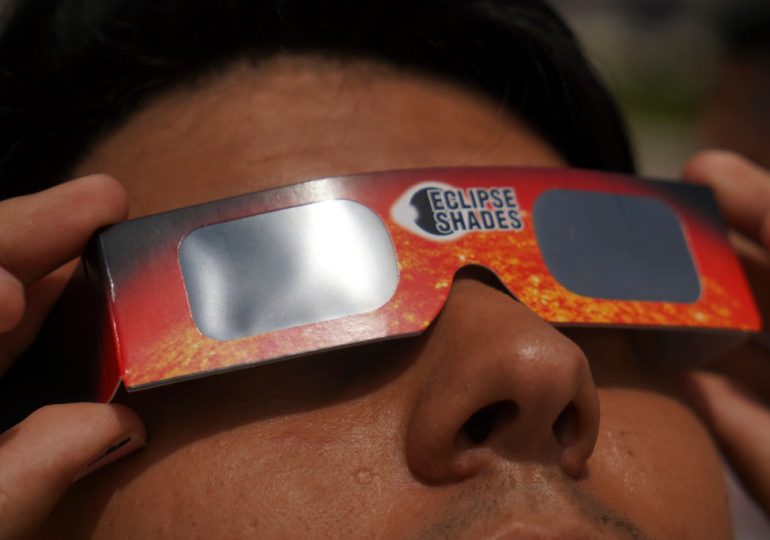A rare total solar eclipse will occur across Mexico, the U.S., and Canada on April 8, 2024. A solar eclipse occurs when the moon passes between the Earth and the Sun, blocking the sun’s rays during the day time, causing a temporary period of darkness.
If you would like to see the total solar eclipse, you will need to visit one of the places along the total eclipse path, which you can learn more about by viewing this map. Some of the largest American cities the eclipse will pass through are Cleveland, Ohio, Indianapolis, Indiana, and Dallas, Texas.
[time-brightcove not-tgx=”true”]
A total solar eclipse can last for up to a maximum of seven and a half minutes, according to NASA. During the period of totality, the time during which the sun is 100% covered by the moon, the sky will darken as though it is dusk or dawn. You can also expect the temperature to drop by approximately 10 degrees Fahrenheit depending on humidity levels and cloud coverage. For best viewing, try to find a place that has few clouds and gives you a direct view of the sky.
The exact timing of the eclipse will depend on which city you are based in. To find out when the eclipse will occur in your town, you can go to the Eclipse 2024 website. In Dallas, the total eclipse will begin at 1:40 p.m. local time. In Indianapolis, it will start at 3:06 p.m. and in Cleveland, it will begin at 3:13 p.m. local time. In all three cities, it is expected to last approximately 3 minutes and 50 seconds.
If you aren’t near a city in the direct path of the eclipse, you should still be able to at least witness a partial eclipse if you are in the continental U.S.
How to view the eclipse
Viewers should also make sure to wear special eclipse glasses, as looking at the sun directly can cause eye damage. Regular sunglasses do not provide enough protection to view an eclipse, according to NASA. The American Astronomical Society provides a list of eclipse eye protection suppliers that comply with international safety standards.
Alternatively, you can use a piece of cardboard and tin foil to create your own pinhole camera, and view the reflection of the eclipse that way, according to NASA. To try this, cut a one inch hole in the middle of one piece of cardboard, then tape a piece of tin foil onto the hole. Poke a small hole into the tin foil, and hold the cardboard a few feet away from the ground and cast your gaze to the shadow that the cardboard crates.
In the middle of the shadow, you should be able to see a small patch of light from the pinhole you poked. During the earlier phase of the partial eclipse, that patch of light will be shaped in the form of a crescent. The crescent will slowly become smaller as the total eclipse gets closer until it disappears from view.
Leave a comment








